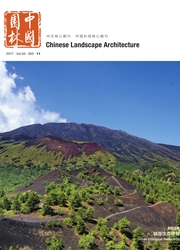

 中文摘要:
中文摘要:
选择北京典型的城市带状绿地——西四环旁侧5种不同郁闭度带状绿地作为研究对象,采用小尺度定量测定的技术方法,分析不同郁闭度的城市带状绿地与空气负离子浓度、空气含菌量问的关系,为建立城市带状绿地评价体系提供科学依据。结果表明,当绿地郁闭度小于0.4时,绿地具有一定的空气质量改善效应,但效果不明显;当郁闭度超过0.4时绿地空气质量改善效应显著(绿地宽度42m,P〈0.05)。其中,绿地的空气负离子效应随郁闭度的增加逐渐增强;绿地的抑菌效应受多方面因素影响(不同郁闭度引起的绿地内部温湿、粉尘状况等),随绿地郁闭度的变化呈一定的规律性,且受季节性因素影响。
 英文摘要:
英文摘要:
In order to provide scientific basis for the establishment of evaluation system for urban green belts, the effects of the different canopy densities of urban green belts on the air anion concentration and bacteria rate were analyzed by the small-scale of quantitative measurement. In this paper, five-green belts with different canopy densities including 0.10,0.31,0.44,0.67,0.86 along the west fourth ring road of Beijing were investigated in April, July, October and December of 2009. The results show: The benefit of urban green belts on improving air quality increases as the canopy density of five-green belts rises. It has a little effect on improving air quality while the canopy density is less than 0.4; When the canopy density exceeds 0.4, it has a significant effect on the increase of air anion concentration and an obvious effect on the decrease of bacteria rate(width 42m , P〈0.05). The air anion effect is gradually strengthened with the increase of canopy density. The bacteriostatic effect has a certain regularity with the change of canopy density, but not obvious subjected to many affecting factors for temperature and humidity conditions, dust condition and so on induced by different canopy density, and the effect is affected by the seasonal factor.
 同期刊论文项目
同期刊论文项目
 同项目期刊论文
同项目期刊论文
 期刊信息
期刊信息
